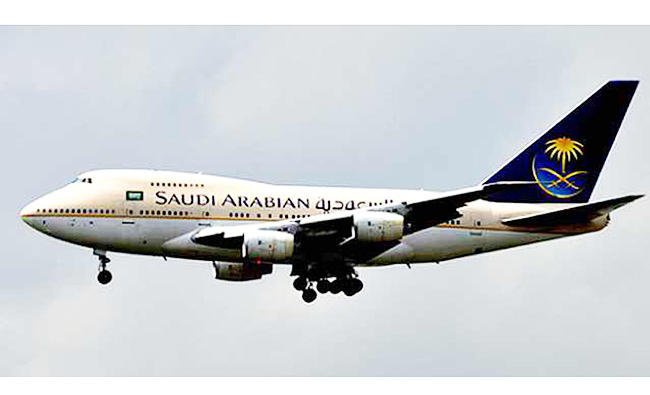
Albrecht aims to pilot Saudia back to its ‘glory days’
Jaan Albrecht chose the occasion of the Arabian Travel Market (ATM) for his first public outing as chief executive of Saudi Arabian Airlines (Saudia), and — even in an arena where aviation news comes thicker and faster than the jets landing at Dubai International Airport — he left his audience with much to ponder.
In an hour-long grilling from industry expert John Strickland, Albrecht gave some detail of his plans for the 72-year-old airline, and how he hopes to bring back what he called its “glory days.”
His strategy involves a rapid expansion in the aircraft fleet, further development of its hubs in Jeddah and Riyadh, massive growth in the number of passengers, especially for religious travel, and a commitment to the highest standard of on-ground and in-flight services.
In the course of a 40-year career that began as a pilot in Mexico (where he was born), Albrecht has privatized one airline, turned around one big loss-maker, and cemented the international Star Alliance, always heading eastward. Before landing in Saudia’s Jeddah HQ, he was in Turkey working on Lufthansa’s joint venture there.
He placed Saudia’s strategy firmly in the context of the country’s Vision 2030 plan for diversification, transformation and modernization.
“The country is looking for alternative sources of revenue, and Saudia is part of that,” he said.
But that does not mean he was hired to prepare the airline for a possible privatization, he insisted. Indeed the letters “IPO” were not mentioned during the hiring process.
“One of the reasons I was brought in was to make the company more profitable, to survive and thrive on its own. If eventually, privatization is part of the government strategy, it has to be in a fit state for that,” he said.
Albrecht will focus on what he regards as the huge potential that exists in the Saudi aviation market, unique among the Gulf Cooperation Council (GCC) countries. “There are 30 million proud Saudis who constitute a big domestic market you do not get in the rest of the region,” he said.
He believes the presence of the Two Holy Mosques in Makkah and Madinah are a source of enormous travel demand, and it is Saudia’s job to satisfy it. There were 8 million pilgrims last year, projected to rise to 20 million in 2020 and 30 million in 2030, he said.
Many of those will come through the new facilities at Jeddah, where a brand-new terminal is being planned to exploit its three runways. Development of the other hub in Riyadh is the second part of the strategy.
But the domestic market is not limited to those two. There are 27 airports in the Kingdom, he said, and Saudia serves 25 of them.
Until a few years ago, Saudia had the domestic market to itself via a monopoly arrangement, but now that is being challenged locally by low-cost operator Flynas. Saudia will, later this year, launch its own no-frills operator Flyadeal, a stand-alone operation owned by Saudia.
Internationally, Saudia will compete more intensively with other Gulf and international carriers that fly to the Kingdom. Albrecht is upgrading and expanding the fleet to meet this international challenge and plans to increase the size of the fleet from about 130 passenger aircraft to 200.
Given his background in Star, he will also be a more enthusiastic member of the SkyTeam alliance to which Saudia already belongs.
Albrecht admitted the US ban on in-flight laptops from Jeddah and Riyadh was a surprise but said it would not impact Saudia’s trans-Atlantic business as much as other Gulf carriers, which served more as hubs for air traffic from Asia to the US.
Albrecht reflected on his new role: “A good pilot is not necessarily a good manager, but in a turnaround situation it is an asset to have been a pilot. And both have safety as their top priority.”


























